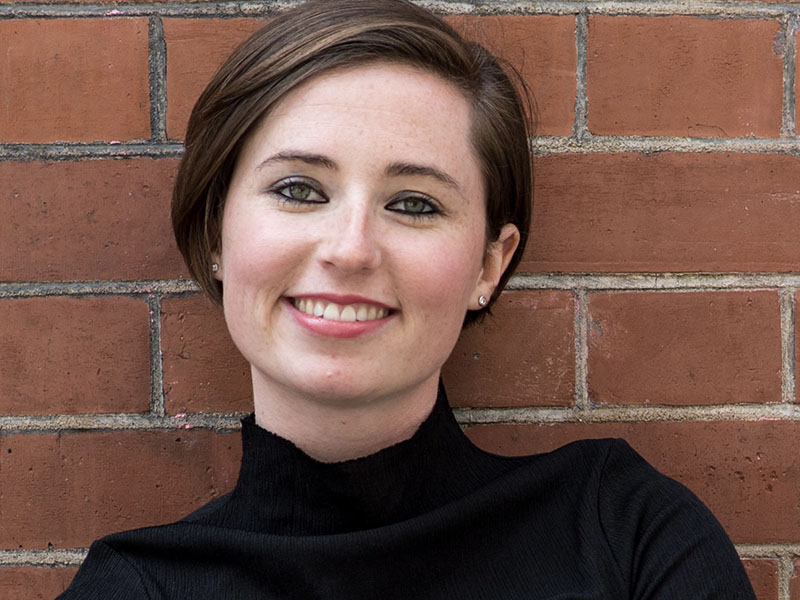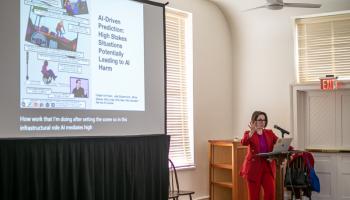Bridging Journalism’s Technological Divide

Local news organizations were once a mainstay of American life, building strong community connections and economies and holding community leaders and officials to account. Today, as large media corporations grow in size, influence and resources, editors and reporters in smaller newsrooms are finding it increasingly difficult to keep up with the emerging technologies and resources that could help them continue to play an important role in the communities they serve. However, a project co-led by University of Virginia sociologist Mona Sloane, supported by a $250,000 grant from the Patrick J. McGovern Foundation, could provide important insight into the state of journalism and technology today and help level the playing field.
As the volume of data the world produces increases dramatically and large language model-based chatbots like ChatGPT and other tools emerge that can help in searching that data and shaping it into useful content, the skills needed to practice the craft of journalism are changing rapidly.
“We depend on journalism to help us be informed citizens and to help us make informed political decisions, and technology is playing an increasingly important part in that process,” said Sloane, an assistant professor with the College and Graduate School of Arts & Sciences’ Department of Media Studies and the University’s School of Data Science.
“We can’t leave this up to just a few newsrooms – some of which are owned by tech billionaires – that have the resources and the power,” Sloane added. “We need local news organizations to do this kind of work, too, and to be able to run their own investigative reporting.”
To better understand the technological challenges reporters and editors face, especially those whose shrinking newsrooms lack resources, Sloane will be running a research project aimed at developing a better understanding of how contemporary journalists work. The project also will analyze the often expensive technology available to today’s newsrooms, along with the risks those tools pose for creating biased reporting.

The work builds on a project Sloane launched in 2021 in partnership with Emmy Award-winning reporter and NYU journalism professor Hilke Schellmann. That project integrated the natural-language processing tool Gumshoe into the cloud-based, open-source platform MuckRock, a research tool used by thousands of newsrooms across the country. The project makes it possible to harness AI to search large collections of Freedom of Information Requests and other documents more efficiently and with the help of a tool that learns about the individual journalist’s needs and improves with each use.
“FOIA material is a very rich resource not only because it may contain interesting information in and of itself, but because it can often be the means to uncovering, as my collaborator and investigative journalist Hilke Schellmann likes to say, ‘a smoking gun.’” Sloane said. “It can give us a name, or it can turn an investigation in an important new direction.”
A journalist might uncover a piece of data they wouldn’t have found otherwise using a tool that starts to understand what the investigation is about and that works to understand the relationship between relevant and irrelevant keywords before ranking them in a search, Sloane said.
“That can save investigative reporters a lot of time and resources,” she said.
The project is being expanded with funding provided by the Patrick J. McGovern Foundation, a philanthropic organization that supports efforts to explore how technology can be used to advance social good. The funding will provide the resources necessary to expand graduate work in media studies and data science at UVA and will allow Sloane and a team of University graduate students to develop a more comprehensive understanding contemporary journalism practices and their technology use and needs.
She also sees the work as being essential to helping the public better understand the interplay of journalism and technology.
“I think we will be able to shed some light on how automation in the newsroom actually happens, because there’s a lot of fear around that in the public sphere and in the industry as well,” Sloane said.
Another of Sloane’s goals for the project is to use the project’s research to inform and train journalists through partnerships she’s forging with newsrooms across central Virginia.
“We need journalists to make sure that our democratic values are actually practiced and are made stable, and we want to make sure that even small rooms and independent journalists have the opportunity to do really cutting-edge investigative reporting,” Sloane said. “That’s the bigger mission. It’s tech research for the greater good.”
The initiative and Sloane’s research has drawn praise by Schellman and other media studies scholars.
“Dr. Sloane’s commitment to interdisciplinary research and to helping journalistic practitioners deepen their knowledge and giving them more access to AI tools is incredibly helpful as we are all building the future of journalism together,” said Schellman, whose award-winning work has appeared in The Wall Street Journal, The Guardian, The New York Times and the MIT Technology Review,
Andrea Press, UVA’s William R. Kenan Jr. Professor of media studies and sociology and chair of the College’s Department of Media Studies praised the initiative for its efforts to make cutting-edge developments in AI and algorithm research available to working journalists.
“It is the beginning of a closer collaboration between scholars and working professionals, which is more and more necessary given the realities of the new media environment within which we all live.”







